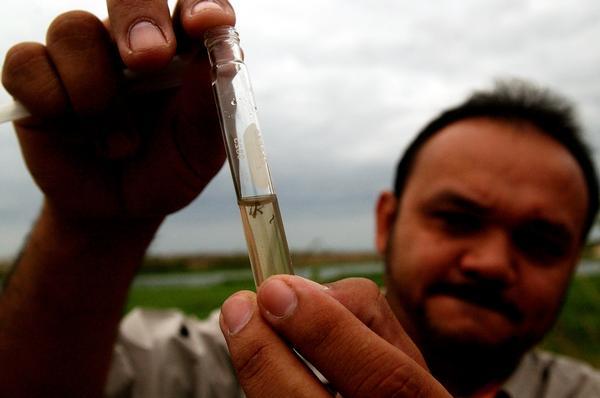Infection
Colorado’s West Nile season peaks ahead of schedule with 36 confirmed cases
As West Nile season approaches its peak in Colorado, the state is starting to see an increase in human cases of the virus, outpacing the five-year average.
Since the first case of the virus was documented in La Plata County on July 17, the Colorado Department of Public Health and Environment has confirmed 36 human cases of the virus across 14 counties. Nineteen of the 36 were hospitalized with severe neurological symptoms and one died from the virus.
Last week, Denver alone was investigating six cases of the virus in residents.
“Based on the past 20 years of monitoring by municipalities, counties and the state, we have seen extremely high levels of mosquito activity in our region this summer,” said Bob McDonald, executive director Denver’s health department. “It’s extremely important to take extra precautions to protect yourself, your family, and neighbors, especially if you’re spending time outdoors in the morning or evening.”
AnneMarie Harper, communications director for the state health department, said 36 statewide cases is also above the norm. On average, Colorado would normally have seen less than 10 cases by this point in the year.
“These increased human cases of West Nile virus follow reports of unusually high levels of infection in the Culex mosquitoes that carry the virus,” she said in a statement to the Denver Post. “The abundance of Culex mosquitoes this season is likely due to the unusual amount of precipitation this winter and spring.”
State epidemiologist Rachel Herlihy said the trends her team is seeing in their West Nile virus tracking data is unprecedented.
West Nile virus has been found in mosquitoes in 10 of the 11 counties that have tested mosquitoes this season, including Adams, Arapahoe, Boulder, Delta, Denver, Jefferson, La Plata, Larimer, Mesa, Pueblo and Weld counties.
“The number of West Nile virus-infected mosquitoes we’ve detected this season is the highest we’ve seen in years,” Herlihy said. “This is especially concerning now that August is here and September is just around the corner, as this is usually when human cases peak in Colorado.”
Eric Aakko, a spokesperson for the Weld County health department, said they don’t usually start seeing cases until September. This year, the county has already documented seven human cases and the state’s only death from the virus.
During the week of July 16, the number of mosquitos that tested positive for West Nile in Weld County passed 2,500 — more than eight times the five-year average.
“What’s interesting is that the number of mosquitos testing positive in those traps is going back down,” Aakko said. “In the week of Aug. 6, it went back below the five-year average and there were less than 200 positive cases.”
Wet weather in July, mixed with hot summer temperatures, might have accelerated the presence of Culex mosquitos and led to the spike of infections, Aakko said.
And the season is far from over, with more spikes in cases expected, state officials across departments said.
According to Brian Byrd, a professor of environmental health sciences at Western Carolina University and SciLine scientist, the highest risk of infection comes from older mosquitos — as opposed to recently hatched insects. After the adult mosquito bites an infected bird, the virus incubates for five to 10 days in the insect’s body before it can transmit the virus.
So when the weather is hot and humid — the Culex’s mosquito’s favorite, according to Aakko — there’s a higher risk of contracting the disease because the insects live longer.
But Byrd said August is a difficult time of year to predict West Nile cases. Between delays in reporting and confirmation of cases and unpredictable weather, there’s no way to know how the rest of the season will turn out.
According to the Centers for Disease Control and Prevention, Colorado had the most West Nile cases in the country last year with 204 cases and 18 deaths from the virus. In 2021, Colorado had the second most cases of any state.
Only 20% of people bitten by mosquitoes carrying the virus will develop symptoms — including fever, headaches, body aches, skin rashes and swollen lymph glands, according to the CDC.
While most people infected with the virus don’t get sick, symptoms for those who do appear between two and 14 days after infection.
About one in 150 people who are infected develop a severe illness or life-threatening symptoms, including high fevers, tremors and convulsions, muscle weakness, paralysis and inflammation of the brain and spinal cord.
Less than 1% of people with West Nile cases die, according to the CDC.
Byrd advised residents to protect themselves by draining standing water weekly, limiting outdoor activities around dusk and dawn, dressing in protective clothing and using DEET, oil of lemon eucalyptus or Picaridin-based insect repellents.
Get more Colorado news by signing up for our daily Your Morning Dozen email newsletter.

